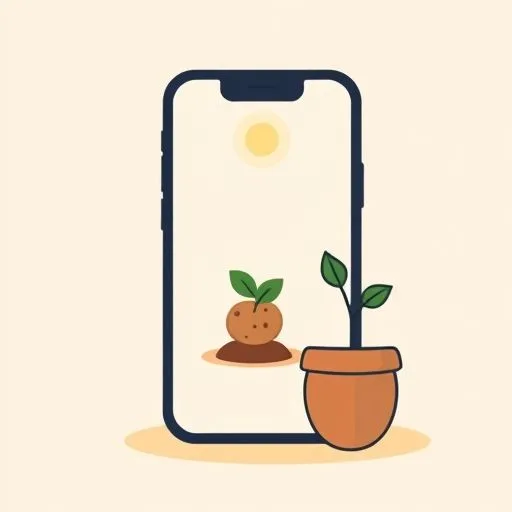
Picture this: a farmer in Malawi, hands caked with rich soil, asking an AI chatbot for advice on planting potatoes—through a shared smartphone carried by a neighbor. No fancy devices, no high-speed internet—just pure, human-hearted innovation. It’s the kind of story that fills you with a sense of pride and inspiration, making you want to cheer, “Yes! This is how we do it!” And as a dad raising a curious 7-year-old in a world buzzing with screens and algorithms, I couldn’t help but draw parallels between our family’s journey and the resilience of those distant fields. Because whether you’re nurturing crops or kids, the secret isn’t just technology—it’s the people who bring it to life. Let’s dig into this inspiring tale of AI in education and community!
How Did Malawi Farmers Use AI to Rewrite Resilience Rules?

When Cyclone Freddy tore through southern Malawi in 2023, it didn’t just wash away crops—it washed away decades of hard work. Farmers like Alex Maere saw their livelihoods vanish in the floods. But here’s the incredible part: instead of giving up, they turned to an AI chatbot named Ulangizi—designed by the non-profit Opportunity International—for advice on rebuilding. And wow, it really delivered! Yields jumped by 20%, and suddenly, farmers were swapping tips on soil management and pest control like old friends sharing recipes.
But here’s the real kicker: most of these farmers don’t own smartphones. Many can’t read. Electricity? Spotty at best. So how did they do it? Through human connection. Support agents like Patrick Napanja travel with smartphones, sharing the app with those who lack devices. It’s AI with a human touch—tech that doesn’t replace people but empowers them. And isn’t that exactly what we want for our kids? Not just screens that isolate, but tools that connect, collaborate, and uplift. This approach to AI in education and community support shows how technology can foster resilience and hope.
Why Does Malawi’s Story Feel Like a Parenting Masterclass?

Reading about Malawi’s farmers, I couldn’t help but think of my daughter’s recent obsession with building a “robot friend” out of cardboard boxes. She’d ask me questions like, “Appa, can robots feel happy?” and we’d talk about how technology is like a super-tool—it only comes alive when we use it with kindness and creativity. This got me thinking about how we can blend technology with our daily lives in a way that enriches our family’s experiences. Just like those farmers leaning on each other, we’re learning to blend tech with tradition in our home, inspiring my daughter to build her own ‘robot friend’ out of cardboard boxes.
And just like those farmers leaning on each other, we’re learning to blend tech with tradition in our home. Instead of handing over a tablet solo, we’ll huddle together to explore an educational app, then run outside to reenact the story with sticks and imagination. It’s about balance—the digital and the dirt-under-your-nails real. Because whether it’s farming or parenting, the best growth happens when we root innovation in human values: trust, community, and good old-fashioned grit. This reflection on AI in education and daily life encourages us to think deeper about how we integrate technology with heart.
What Are 3 Takeaways for Raising Tech-Savvy, Heart-Driven Kids?

So how do we bring Malawi’s wisdom into our daily lives? Here’s the fun part—it’s easier than you think!
1. Make Tech a Team Sport: Just like Malawi’s farmers share smartphones, make screen time a shared adventure. Watch a documentary on AI in education together, then brainstorm how it could help your community. Turn it into a game: “How would we design an app for our neighborhood park?” It’s not about consuming tech; it’s about creating with it.
2. Celebrate the “Human Touch”: AI can suggest the best potato variety, but it takes a person to plant it. Similarly, tech can suggest learning apps, but it takes us to bring the warmth. After using an educational tool, debrief with hugs and high-fives: “What did we discover? How can we use this to help others?”
Grow through challenges—together! Just like Malawi’s farmers faced cyclones and droughts but grew stronger by collaborating, we too can face our challenges head-on, knowing that together, we can overcome anything.
3. Grow Through Challenges—Together: When tech worries creep in—like screen time debates or online safety—frame them as family puzzles to solve. “How can we use AI to protect our privacy? Let’s brainstorm like superheroes!” It’s about turning fear into fuel, with heaps of hope. These tips for AI in education and parenting offer practical ways to foster resilience and connection.
Why Does This Matter for Our Kids’ Future with AI?

Here’s the thrilling part: Malawi’s story isn’t just about farming—it’s a blueprint for the world our kids will inherit. A world where AI in education isn’t about replacing teachers but empowering them. Where technology bridges gaps instead of widening them. Where innovation is measured not by profit, but by people lifted up.
And as parents, we get to plant these seeds early. By showing our kids that tech is a tool for good—like Malawi’s chatbot helping farmers adapt to climate change—we’re nurturing a generation that sees beyond the screen to the souls behind it. A generation that will one day use AI to tackle big problems, with the same compassion and collaboration those farmers showed.
So let’s take a page from Malawi’s playbook: embrace technology, but never lose the human touch. After all, the most powerful algorithm isn’t written in code—it’s written in kindness, community, and the joyous noise of kids learning, growing, and changing the world, one idea at a time. This vision for AI in education and society leaves us reflecting on how we can contribute to a hopeful, connected future.
Source: How Malawi is taking AI technology to small-scale farmers who don’t have smartphones, Abcnews, 2025/09/12
